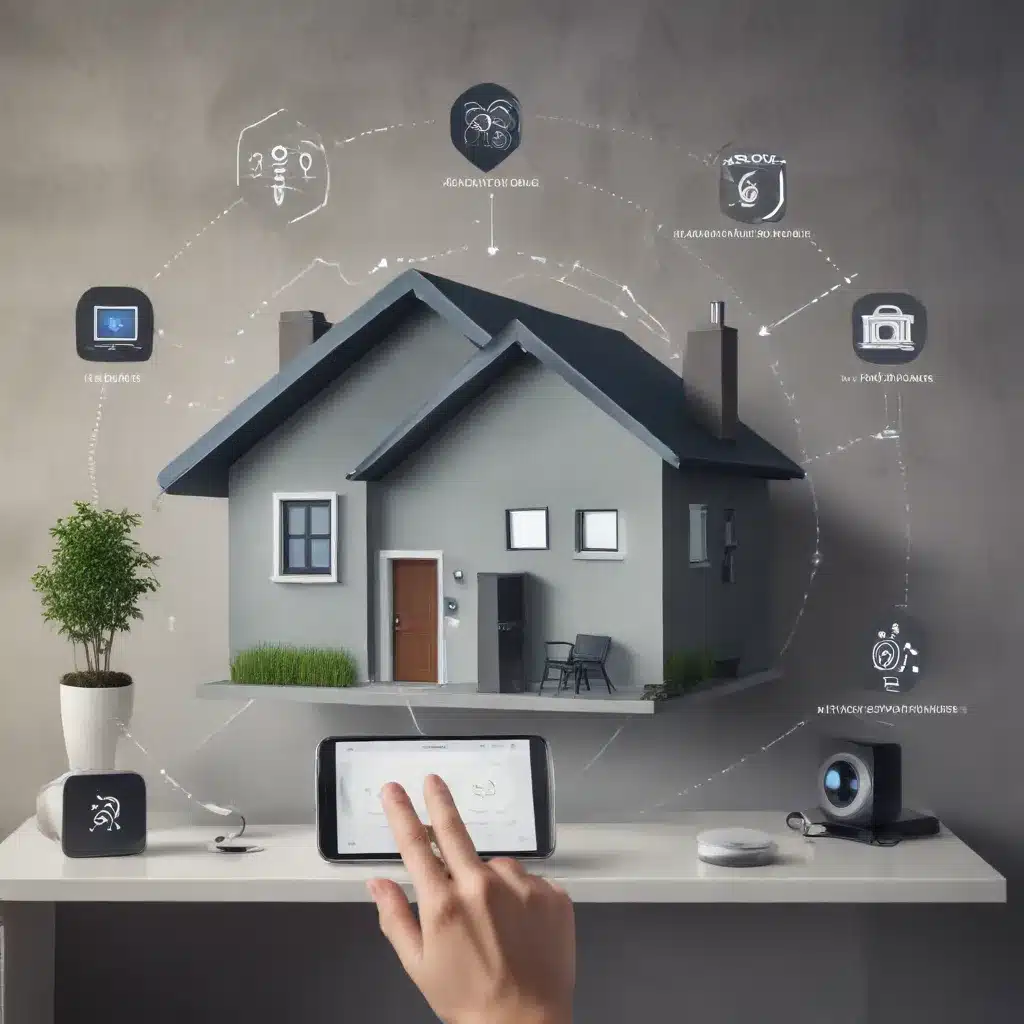
The rapid rise of the Internet of Things (IoT) has transformed our homes into connected, intelligent spaces. Smart devices like voice assistants, security cameras, and thermostats have brought unprecedented convenience, but they’ve also introduced a new set of cyber security risks that homeowners must address.
Cyber Threats Facing Smart Home Devices
As our homes become increasingly reliant on interconnected IoT gadgets, the potential for cyber attacks has grown significantly. Smart home devices are prime targets for malicious actors, who can exploit vulnerabilities to gain unauthorized access, steal sensitive data, or disrupt critical functions.
Malware Infection
One of the biggest threats to smart home devices is the risk of malware infection. Cybercriminals can leverage security flaws in device firmware or weak authentication mechanisms to infiltrate your network and install malicious software. This can allow them to monitor your activities, steal personal information, or even hijack device controls.
Unauthorized Access
Weak password policies and insufficient user authentication processes make it disturbingly easy for attackers to gain unauthorized access to smart home devices. Once inside, they can manipulate settings, disable security systems, or use compromised devices as entry points to infiltrate your entire home network.
Data Breaches
Smart home devices collect a wealth of personal data, from your daily routines to sensitive information like financial details or health records. Inadequate encryption during data transmission or storage can expose this information to eavesdropping or theft, leading to identity fraud, stalking, or other malicious activities.
Common Device Vulnerabilities
The very features that make smart home devices so convenient can also be their Achilles’ heel. Manufacturers often prioritize functionality and cost-effectiveness over robust security, leaving these devices vulnerable to a range of attacks.
Outdated Firmware
Many smart home devices run on outdated firmware that contains known security vulnerabilities. Manufacturers may fail to release timely updates, leaving homeowners exposed to exploits that could compromise their devices and networks.
Weak Password Security
Default, easily guessable passwords are a pervasive problem in the smart home ecosystem. Users often neglect to change these passwords, making it trivial for attackers to gain access to devices and the data they contain.
Lack of Encryption
Smart home devices frequently transmit and store sensitive data without adequate encryption. This leaves the information vulnerable to eavesdropping, interception, and unauthorized access, compromising the privacy and security of the home.
Securing Your Smart Home Devices
Protecting your smart home against cyber threats requires a multi-layered approach that addresses both device-level and network-level security. By implementing best practices and leveraging the right tools, you can significantly reduce the risk of compromise.
Access Control
Robust access control is the foundation of smart home security. Ensure that each device and user account is secured with strong, unique passwords. Wherever possible, enable multi-factor authentication (MFA) to add an extra layer of protection against unauthorized access.
Implement privilege management to limit the permissions and capabilities of individual devices and users. This can help prevent a single compromised device from serving as a gateway to the entire network.
For remote access to your smart home, consider using a Virtual Private Network (VPN) to encrypt your communications and restrict access to authorized individuals only.
Network Security
Your home network is the backbone of your smart home ecosystem, and it requires diligent security measures to protect against cyber threats.
Configure your firewall to monitor and control the flow of traffic to and from your smart devices. Ensure that your wireless network is secured with the latest encryption protocols, such as WPA3, to prevent unauthorized access.
Segment your network by creating a dedicated VLAN (Virtual Local Area Network) for your smart home devices. This can help isolate them from the rest of your network, reducing the potential for cross-contamination in the event of a breach.
Firmware and Software Updates
Keeping your smart home devices up-to-date is crucial for maintaining their security. Whenever possible, enable automatic firmware and software updates to ensure that your devices receive the latest security patches and bug fixes.
In cases where automatic updates are not available, be proactive about manually updating your devices. This may involve flashing new firmware or installing security patches provided by the manufacturer.
Security Best Practices
Securing your smart home goes beyond just technical measures. It also requires a commitment to good cyber hygiene and user awareness.
Device Configuration
When setting up smart home devices, always change the default passwords to strong, unique ones. Disable any unnecessary features or services that could potentially expose your devices to attacks.
Wherever available, enable two-factor authentication (2FA) to add an extra layer of security to your device accounts. This helps prevent unauthorized access, even if your password is compromised.
User Awareness
Educate yourself and your family members on the potential cyber threats facing smart home devices. Teach them to recognize and avoid phishing attempts, and ensure that everyone understands the importance of securing your home’s wireless network.
Regularly monitor the activity of your smart home devices, looking for any suspicious behavior or unauthorized access attempts. If you notice any anomalies, take immediate action to investigate and address the issue.
Remember, securing your smart home is an ongoing process. By staying vigilant, implementing robust security measures, and keeping your devices up-to-date, you can enjoy the convenience of a connected home while minimizing the risks of cyber attacks.
And if you ever need help with any IT-related issues, be sure to check out the services offered by IT Fix. Our team of experts is always ready to assist you with hardware repair, data backup and recovery, cloud computing, and more. Together, we can ensure that your smart home remains safe and secure.












